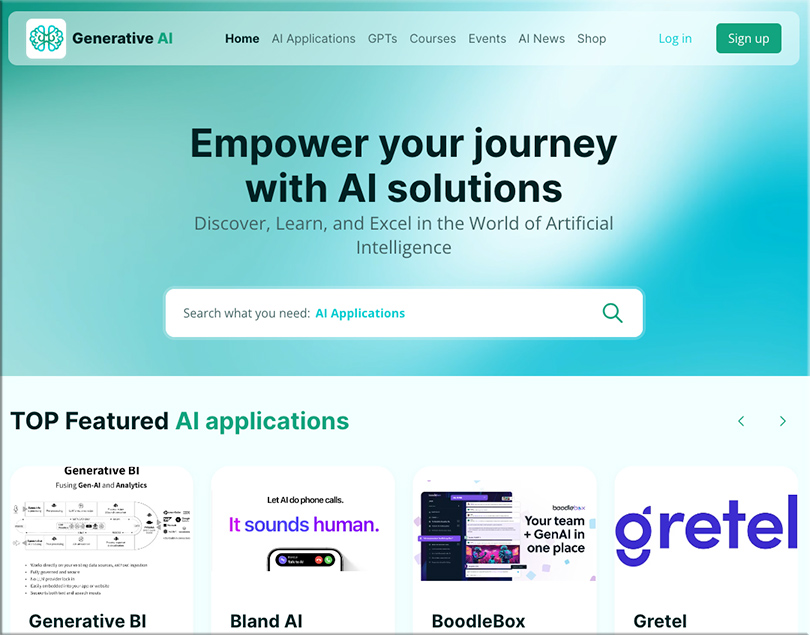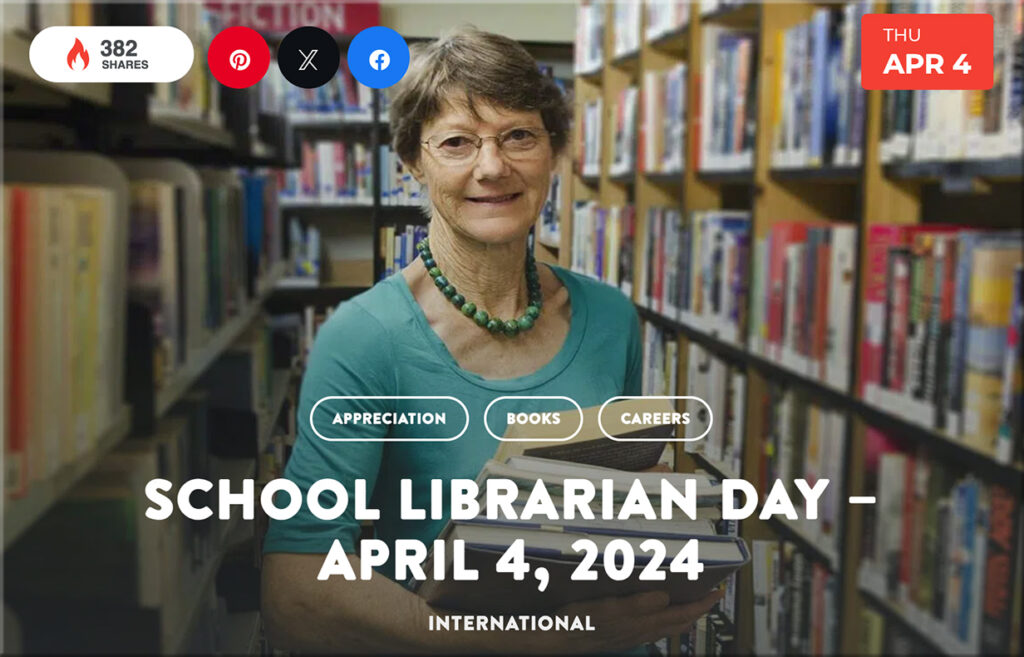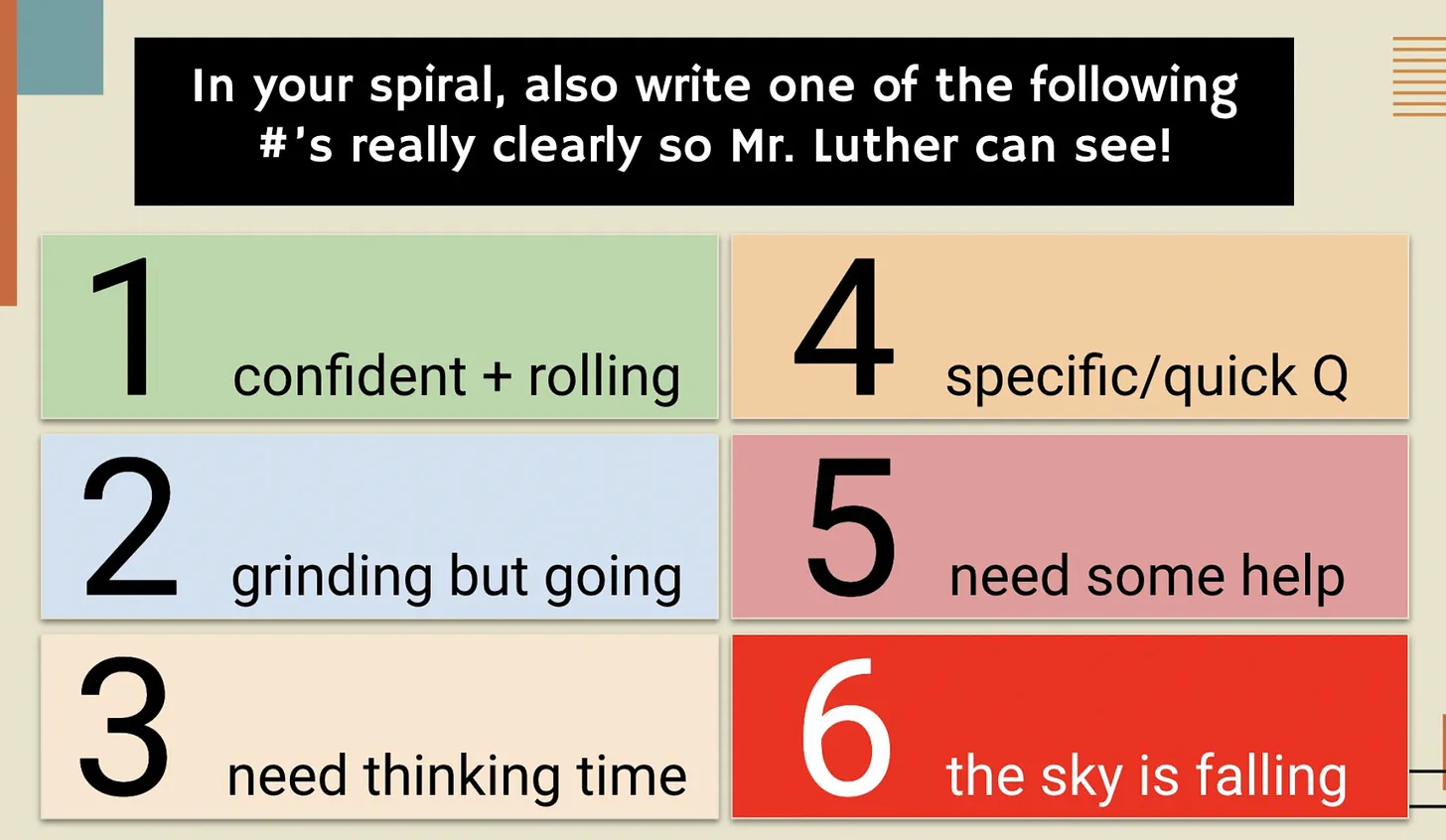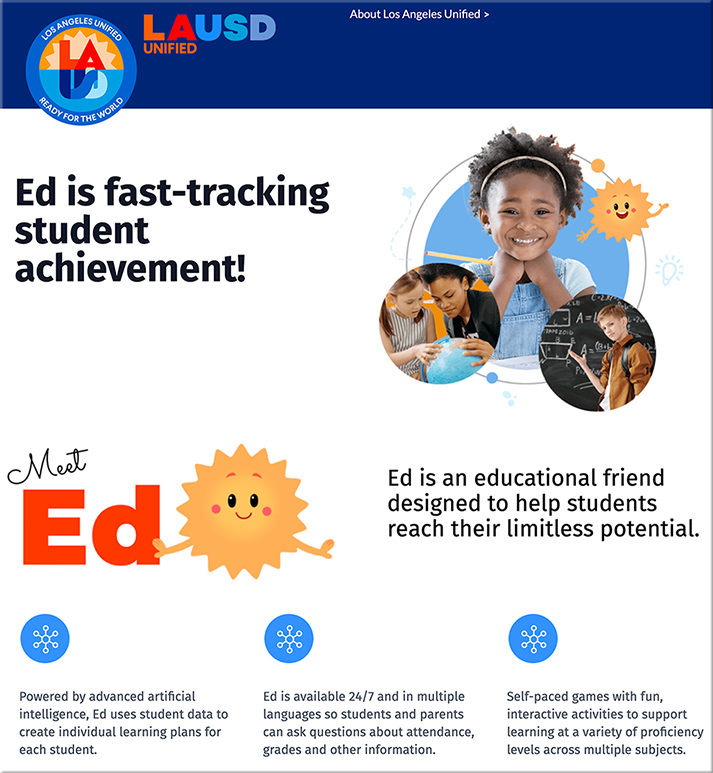The Verge | What’s Next With AI | February 2024 | Consumer Survey
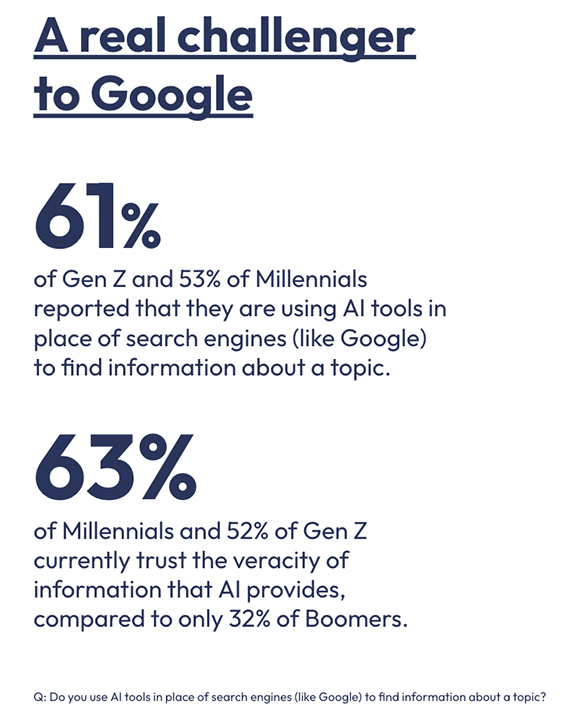

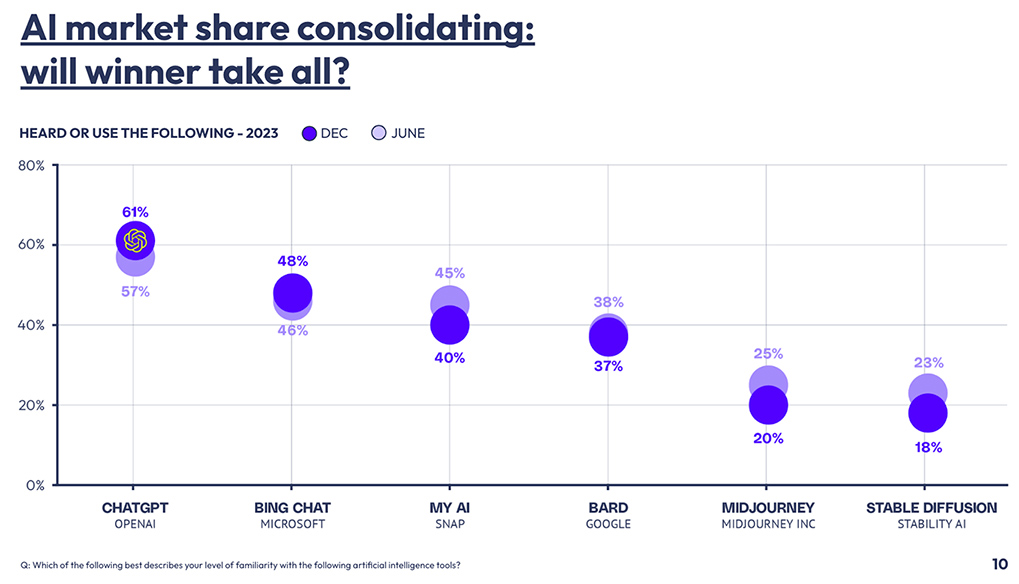

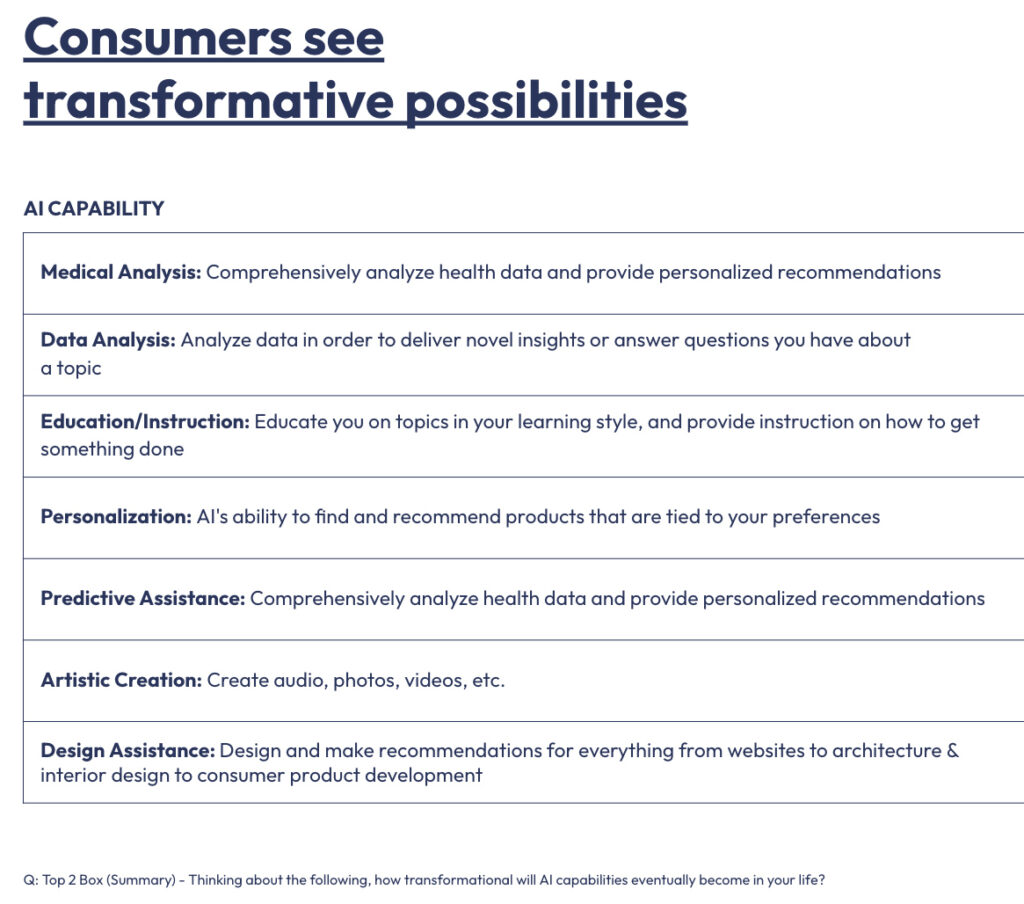
DC: Just because we can doesn’t mean we should.
It brings to mind #AI and #robotics and the #military — hmmmm…. https://t.co/1J4XKiHRUl
— Daniel Christian (he/him/his) (@dchristian5) April 25, 2024
Microsoft AI creates talking deepfakes from single photo — from inavateonthenet.net
The Great Hall – where now with AI? It is not ‘Human Connection V Innovative Technology’ but ‘Human Connection + Innovative Technology’ — from donaldclarkplanb.blogspot.com by Donald Clark
The theme of the day was Human Connection V Innovative Technology. I see this a lot at conferences, setting up the human connection (social) against the machine (AI). I think this is ALL wrong. It is, and has always been a dialectic, human connection (social) PLUS the machine. Everyone had a smartphone, most use it for work, comms and social media. The binary between human and tech has long disappeared.
Techno-Social Engineering: Why the Future May Not Be Human, TikTok’s Powerful ForYou Algorithm, & More — from by Misha Da Vinci
Things to consider as you dive into this edition:
- As we increasingly depend on technology, how is it changing us?
- In the interaction between humans and technology, who is adapting to whom?
- Is the technology being built for humans, or are we being changed to fit into tech systems?
- As time passes, will we become more like robots or the AI models we use?
- Over the next 30 years, as we increasingly interact with technology, who or what will we become?
It’s been an insane week for AI (part 2)
Here are 14 most impressive reveals from this week:
1/ China just released OpenAI’s Sora rival “Vidu” which can create realistic clips in seconds.pic.twitter.com/MnTv9Wxpef
— Barsee ? (@heyBarsee) April 27, 2024
Description:
I recently created an AI version of myself—REID AI—and recorded a Q&A to see how this digital twin might challenge me in new ways. The video avatar is generated by Hour One, its voice was created by Eleven Labs, and its persona—the way that REID AI formulates responses—is generated from a custom chatbot built on GPT-4 that was trained on my books, speeches, podcasts and other content that I’ve produced over the last few decades. I decided to interview it to test its capability and how closely its responses match—and test—my thinking. Then, REID AI asked me some questions on AI and technology. I thought I would hate this, but I’ve actually ended up finding the whole experience interesting and thought-provoking.
From DSC:
This ability to ask questions of a digital twin is very interesting when you think about it in terms of “interviewing” a historical figure. I believe character.ai provides this kind of thing, but I haven’t used it much.
The AI Tools in Education Database — from aitoolsdirectory.notion.site; via George Siemens
Since AI in education has been moving at the speed of light, we built this AI Tools in Education database to keep track of the most recent AI tools in education and the changes that are happening every day. This database is intended to be a community resource for educators, researchers, students, and other edtech specialists looking to stay up to date. This is a living document, so be sure to come back for regular updates.
Another Workshop for Faculty and Staff — from aiedusimplified.substack.com by Lance Eaton
A recent workshop with some adjustments.
The day started out with a short talk about AI (slides). Some of it is my usual schtick where I do a bit of Q&A with folks around myths and misunderstandings of generative AI in order to establish some common ground. These are often useful both in setting the tone and giving folks a sense of how I come to explore generative AI: with a mixture of humor, concern, curiosity, and of course, cat pics.
From there, we launched into a series of mini-workshops where folks had time to first play around with some previously created prompts around teaching and learning before moving onto prompts for administrative work. The prompts and other support materials are in this Workshop Resource Document. The goal was to just get them into using one or more AI tools with some useful prompts so they can learn more about its capabilities.
The Edtech Insiders Rundown of ASU+GSV 2024 — from edtechinsiders.substack.com by by Sarah Morin, Alex Sarlin, and Ben Kornell
And more on Edtech Insiders+, upcoming events, Gauth, AI Reading Tutors, The Artificial Intelligence Interdisciplinary Institute, and TeachAI Policy Resources
Alex Sarlin
4. Everyone is Edtech Now
This year, in addition to investors, entrepreneurs, educators, school leaders, university admins, non-profits, publishers, and operators from countless edtech startups and incumbents, there were some serious big tech companies in attendance like Meta, Google, OpenAI, Microsoft, Amazon, Tiktok, and Canva. Additionally, a horde of management consultancies, workforce organizations, mental health orgs, and filmmakers were in attendance.
Edtech continues to expand as an industry category and everyone is getting involved.
Ep 18 | Rethinking Education, Lessons to Unlearn, Become a Generalist, & More — Ana Lorena Fábrega — from mishadavinci.substack.com by Misha da Vinci
It was such a delight to chat with Ana. She’s brilliant and passionate, a talented educator, and an advocate for better ways of learning for children and adults. We cover ways to transform schools so that students get real-world skills, learn resilience and how to embrace challenges, and are prepared for an unpredictable future. And we go hard on why we must keep learning no matter our age, become generalists, and leverage technology in order to adapt to the fast-changing world.
Misha also featured an item re: the future of schooling and it contained this graphic:
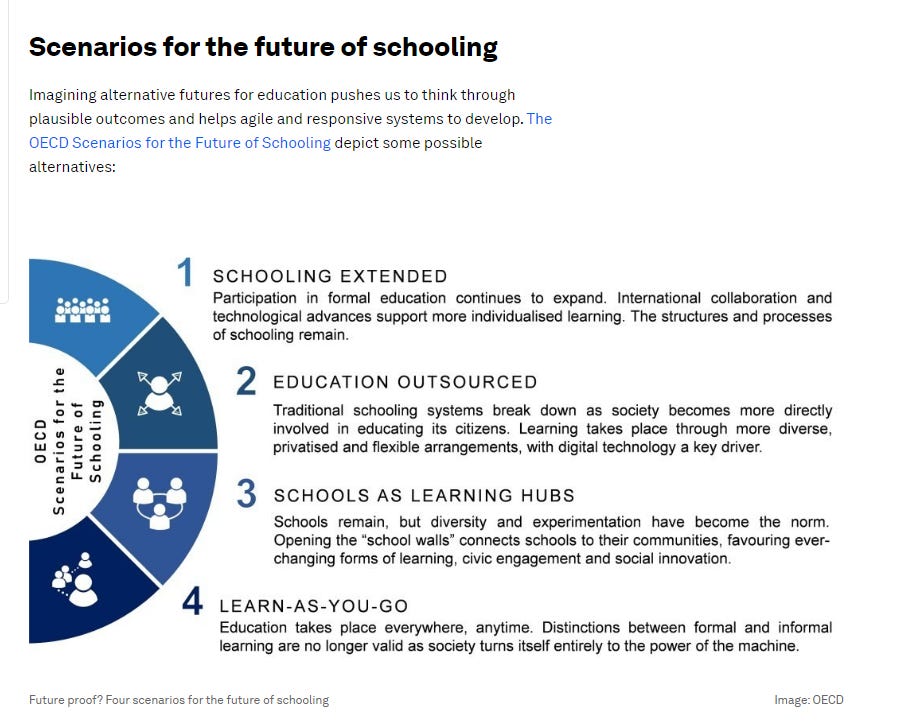
Texas is replacing thousands of human exam graders with AI — from theverge.com by Jess Weatherbed
The Texas Tribune reports an “automated scoring engine” that utilizes natural language processing — the technology that enables chatbots like OpenAI’s ChatGPT to understand and communicate with users — is being rolled out by the Texas Education Agency (TEA) to grade open-ended questions on the State of Texas Assessments of Academic Readiness (STAAR) exams. The agency is expecting the system to save $15–20 million per year by reducing the need for temporary human scorers, with plans to hire under 2,000 graders this year compared to the 6,000 required in 2023.
Debating About AI: An Easy Path to AI Awareness and Basic Literacy — from stefanbauschard.substack.com by Stefan Bauschard
If you are an organization committed to AI literacy, consider sponsoring some debate topics and/or debates next year and expose thousands of students to AI literacy.
Resolved: Teachers should integrate generative AI in their teaching and learning.
The topic is simple but raises an issue that students can connect with.
While helping my students prepare and judging debates, I saw students demonstrate an understanding of many key issues and controversies.
These included—
*AI writing assessment/grading
*Bias
*Bullying
*Cognitive load
*Costs of AI systems
*Declining test scores
*Deep fakes
*Differentiation
*Energy consumption
*Hallucinations
*Human-to-human connection
*Inequality and inequity in access
*Neurodiversity
*Personalized learning
*Privacy
*Regulation (lack thereof)
*The future of work and unemployment
*Saving teachers time
*Soft skills
*Standardized testing
*Student engagement
*Teacher awareness and AI training; training resource trade-offs
*Teacher crowd-out
*Transparency and explainability
*Writing detectors (students had an exaggerated sense of the workability of these tools).
AI Cheatsheet Collection — from enchanting-trader-463.notion.site; via George Siemens
Here are the 30 best AI Cheat Sheets/Guides we collected from the internet
Generative AI: Empower your journey with AI solutions
From The Rundown AI
The Rundown: Adobe just announced a new upgrade to its Firefly image generation model, bringing improvements in image quality, stylization capabilities, speed, and details – along with new AI integrations.
The details:
- Firefly Image 3 promises new photorealistic quality, improved text rendering, better prompt understanding, and enhanced illustration capabilities.
- New Structure and Style Reference tools allow users more precise control over generations.
- Photoshop updates include an improved Generative Fill, Generate Image, Generate Similar, Generate Background, and Enhance Detail.
- Adobe emphasized training the model on licensed content, with Firefly images automatically getting an AI metadata tag.
Why it matters…
Wonder Tools | Best apps for building good habits — from wondertools.substack.com by Jeremy Caplan and Andrea Engstrom
Most New Year’s resolutions are buried by now. April’s a great time for a fresh start. So today’s post focuses on simple, useful tools to help you revive a good habit or two. Read on for my favorite app for tracking habits and a few alternatives.
Meeting Students’ Needs for Emotional Support — from edutopia.org by Zi Jia Ng
A new survey finds that a large percentage of students don’t feel that they have an adult to turn to at school when they’re troubled.
Only 55 percent of elementary school students (grades three through five), 42 percent of middle school students, and 40 percent of high school students in the United States have an adult at school they can talk to when they feel upset or stressed, according to a survey of more than 200,000 students across 20 different states. At every age, students benefit from a hand to hold, an ear to listen, and a heart to understand them.
Here’s one strategy for helping to ensure that every student has a trusted adult at school.
Getting Middle and High School Students With Low Grades Back on Track — from edutopia.org by Christine Boatman
By sitting down with students and laying out just what they need to do to pass, teachers can give them the tools to succeed.
AN ANTIDOTE TO PROCRASTINATION
There are effective preventive measures that teachers can take to support middle and high school students with time-management and organizational skills. Still, some students inevitably may find themselves behind at the end of the semester and need individualized Tier 2 interventions as a result of their procrastination.
A Tier 2 strategy that teachers can use to support student efforts to pass classes during the end-of-the-semester scramble is the creation of individual PDSA (plan, do, study, act) cycles. A PDSA cycle is a process in which teachers and students work together to create a plan for improvement; implement, or do, the plan; study if the plan’s actions were successful; and act to create long-term improvement actions based on the results of the plan.
In PDSA cycles, teachers work with their students to create plans for success. These plans can be used either with a whole group or on an individual basis. Through working one-on-one with students this way, I’ve seen large gains in student achievement and agency.
A Student’s Perspective on Career and Interview Readiness — from gettingsmart.com by Tyler Robert and Todd Smith
Key Points
- Sharing experiences in real-world learning is an asset when interviewing for early career opportunities.
- Building confidence in not only being interviewed but also speaking about your skills in common language is a key part of creating effective pathways.
Asking Students What They Would Do If They Were The Teacher — from thebrokencopier.substack.com by Marcus Luther
one of my favorite practices we’ve normed in our classroom
Though it had been a bit since our previous check-in, the major drop in how students were doing overall was staggering—yet also very much tracked with the “vibe” of the classroom of late: students still feel pretty good about what we’re doing, but overall are exhausted and stressed, each in their own way but collectively as well.
My plan on Monday, then?
To share these results with the entire classroom followed by a simple question:
“If you were the teacher and you saw this feedback, what would you think and, more importantly, what would you do?”
And then I’ll listen to what they have to say.
Reflecting back on my own classroom over the years, though, too often the collecting of the feedback became a dead end as far as how students experienced this: they gave their results and then those results disappeared into the digital ether, in their eyes.
The US is experiencing a boom in microschools. What are they? — from thehill.com by Alejandra O’Connell-Domenech; via GSV
Story at a glance (emphasis DSC)
- There has been a surge in new microschools in the U.S. since the start of the COVID-19 pandemic.
The National Microschooling Network estimates there are about 95,000 microschools in the country. The median microschool serves 16 students. - There is no regulatory body solely responsible for tracking microschools, so it is difficult to determine just how much their popularity has grown.
Advocates for microschools say they offer some students — especially those who are gifted or have learning disabilities — a greater chance to thrive academically and socially than traditional schools do.
At Sphinx Academy, a micro-school based in Lexington, Ky., almost all 24 students are “twice exceptional,” meaning they are gifted in one academic area but have one or more learning disabilities like ADHD or dyslexia, according to the school’s director Jennifer Lincoln.
Student Apathy Is a Big Classroom Challenge, Teachers Say. Cellphones Aren’t Helping — from edweek.org by Madeline Will
The stakes are high: Students have a lot of academic ground to make up following the pandemic. Yet they’re not fully engaged in the classroom, teachers report in a new national survey.
Here’s What Keeps Teachers on the Job — from edweek.org by Madeline Will, Elizabeth Heubeck, Ileana Najarro, Arianna Prothero & Sarah Schwartz
The best aspects of teaching are what propels them to stay, despite the challenges
Their answers reveal the best parts of teaching—the meaningful interactions with students, the freedom to design interesting and engaging lessons, and the feeling of making a difference. And despite the challenges of the last few years, teachers have also noticed positive shifts in education.
School Librarian Day – April 4, 2024 — from nationaltoday.com
Why Teachers Quit + What You Can Do Instead — from devlinpeck.com by Devlin Peck
Today we’ll dive into the main reasons behind why teachers quit and signs to look for if you’re considering quitting teaching too.
…
Instructional design
Instructional design is the process of developing learning experiences for higher education, the corporate world, or for organizations such as non-profits. Many teachers transition into the field because of overlapping tasks that allow you to continue teaching, all while learning a new skill set. But instructional design also offers:
- Higher rates of pay than teaching. Instructional design is a better paid industry than teaching. You can also work when and where you like.
- Better work-life balance. 94% of instructional designers said they were happy with their work-life balance in our recent survey.
- Less stress. Instructional design is a less demanding role than teaching as you don’t have the same safety considerations or unreasonable expectations as you have in many teaching jobs.
From DSC:
I hesitate to post this, as I don’t want to discourage teachers already dealing with all kinds of challenges. But I’m posting it for the teachers who are tired of fighting a broken one-size-fits-all system that answers to their state’s legislators (vs. their students/families/communities). For those teachers hanging in there, please fight for change where you think it’s needed. We trust your judgment, as you are on the front lines. And I always try to support people working on the front lines — whether in business or in schools.
3 Steps for Creating Video Projects With Elementary Students — from edutopia.org by Bill Manchester
A straightforward plan for facilitating multimedia projects helps ensure collaborative learning and a fun classroom experience.
Having elementary students make their own videos instead of consuming content made by someone else sounds like a highly engaging educational experience. But if you’ve ever tried to get 25 third graders to use a video editing software platform that they’ve never seen before, it can get really frustrating really fast. It’s easy for the lesson to become entirely centered around how to use the software without any subject-area content learning.
Through years of trial and error with K–6 students, I’ve developed three guiding concepts for elementary video projects so that teachers and students have a good experience.
Supporting Students As They Work Independently — from by Marcus Luther and The Broken Copier
4 tools that have helped me improve “independent work time”
Movement-Based Games That Help Students With Spelling — from edutopia.org by Jocelyn Greene
Games that combine spelling with physical activity can make it easier for young students to learn new words.
Like actors, students are often tasked with memorization. Although education has evolved to incorporate project-based learning and guided play, there’s no getting around the necessity of knowing the multiplication tables, capital cities, and correct spelling.
The following are movement-based games that build students’ abilities to retain spelling words specifically. Ideally, these exercises support them academically as well as socially. Research shows that learning through play promotes listening, focus, empathy, and self-awareness—benefits that build students’ social and emotional learning skills.
Quizlet Survey Reveals Students Crave Life Skills Education — from prnewswire.com by Quizlet; via GSV
The survey’s key findings included:
- Financial and life skills uncertainty: One-third of recent graduates don’t believe they have or are unsure they have the financial and core life skills needed to succeed in the world.
- Appetite for non-academic courses: 68% of recent graduates think non-academically focused courses in formal education settings would better prepare students for the real world. This belief is especially strong among respondents that attended public schools and colleges (71%).
- Automotive maintenance skills are stalled: More than any other skill, nearly one in five recent graduates say they are the least confident in handling automotive maintenance, such as changing a tire or their oil. This is followed by financial planning (17%), insurance (12%), minor home repairs (11%), cooking (11%), cleaning (8%) and organizing (8%).
- Financial planning woes: A majority (79%) of recent graduates said financial planning overwhelms them the most – and of all the life skills highlighted in the survey, 29% of respondents said it negatively impacts their mental health.
- Social media as a learning tool: Social media is helping fill the skills gap, with 33% of recent graduates turning to it for life skills knowledge.
From DSC:
Our son would agree with many of these findings. He would like to have learned things like how to do/file his taxes, learn more about healthcare insurance, and similar real-world/highly-applicable types of knowledge. Those involved with K12 curriculum decisions, please take a serious look at this feedback and make the necessary changes/additions.
How Can Educators Build Support Systems for Students Eyeing Technician Jobs? — from gettingsmart.com by Dr. Parminder Jassal
Key Points
-
Integrating technical skills into the high school curriculum can inspire and prepare students for diverse roles. This approach is key to fostering equity and inclusivity in the job market.
-
By forging partnerships with community colleges and technical schools, high schools can democratize access to education and ensure students from all backgrounds have equal opportunities for success in technical fields.
-
High schools can expand career possibilities by providing apprenticeships as viable and lucrative alternatives to traditional four-year degrees.
Recap: Supporting Neurodivergent Students with Dyscalculia, Dysgraphia, Dyslexia, and Dyspraxia — from umcetl.substack.com by Liz Norell
Greater awareness of neurodivergent types can lead to more inclusive and equitable teaching. In this recap, we provide an overview of four different neurotypes and strategies to support them.
At last week’s event, we continued our focus on supporting neurodivergent students by taking a closer look at four specific conditions that could impact student behaviors and academic work. By spreading greater awareness and understanding, we hope to interrupt potentially harmful assumptions and foster greater curiosity and empathy for our students. Doing so can help us create environments that support learning, mental health, and academic success.
The slides from that presentation are available here, and below are some key takeaways and resources. Also be sure to check out the recap and resources from last fall’s session, where we covered ADHD and autism, along with several other foundational concepts around neurodivergence.
Also see:
Understanding dyscalculia — from understood.org
Dyscalculia is a learning disability in math. It makes it hard to work with and make sense of numbers. Learn more about dyscalculia and why people have trouble with math. Discover ways to help.
How Generative AI Owns Higher Education. Now What? — from forbes.co by Steve Andriole
Excerpt (emphasis DSC):
What about course videos? Professors can create them (by lecturing into a camera for several hours hopefully in different clothes) from the readings, from their interpretations of the readings, from their own case experiences – from anything they like. But now professors can direct the creation of the videos by talking – actually describing – to a CustomGPTabout what they’d like the video to communicate with their or another image. Wait. What? They can make a video by talking to a CustomGPT and even select the image they want the “actor” to use? Yes. They can also add a British accent and insert some (GenAI-developed) jokes into the videos if they like. All this and much more is now possible. This means that a professor can specify how long the video should be, what sources should be consulted and describe the demeanor the professor wants the video to project.
From DSC:
Though I wasn’t crazy about the clickbait type of title here, I still thought that the article was solid and thought-provoking. It contained several good ideas for using AI.
Excerpt from a recent EdSurge Higher Ed newsletter:
There are darker metaphors though — ones that focus on the hazards for humanity of the tech. Some professors worry that AI bots are simply replacing hired essay-writers for many students, doing work for a student that they can then pass off as their own (and doing it for free).
From DSC:
Hmmm…the use of essay writers was around long before AI became mainstream within higher education. So we already had a serious problem where students didn’t see the why in what they were being asked to do. Some students still aren’t sold on the why of the work in the first place. The situation seems to involve ethics, yes, but it also seems to say that we haven’t sold students on the benefits of putting in the work. Students seem to be saying I don’t care about this stuff…I just need the degree so I can exit stage left.
My main point: The issue didn’t start with AI…it started long before that.
And somewhat relevant here, also see:
I Have Bigger Fish to Fry: Why K12 Education is Not Thinking About AI — from medium.com by Maurie Beasley, M.Ed. (Edited by Jim Beasley)
This financial stagnation is occurring as we face a multitude of escalating challenges. These challenges include but are in no way limited to, chronic absenteeism, widespread student mental health issues, critical staff shortages, rampant classroom behavior issues, a palpable sense of apathy for education in students, and even, I dare say, hatred towards education among parents and policymakers.
…
Our current focus is on keeping our heads above water, ensuring our students’ safety and mental well-being, and simply keeping our schools staffed and our doors open.
Meet Ed: Ed is an educational friend designed to help students reach their limitless potential. — from lausd.org (Los Angeles School District, the second largest in the U.S.)
What is Ed?
An easy-to-understand learning platform designed by Los Angeles Unified to increase student achievement. It offers personalized guidance and resources to students and families 24/7 in over 100 languages.
Also relevant/see:
- Los Angeles Unified Bets Big on ‘Ed,’ an AI Tool for Students — from by Lauraine Langreo
The Los Angeles Unified School District has launched an AI-powered learning tool that will serve as a “personal assistant” to students and their parents.The tool, named “Ed,” can provide students from the nation’s second-largest district information about their grades, attendance, upcoming tests, and suggested resources to help them improve their academic skills on their own time, Superintendent Alberto Carvalho announced March 20. Students can also use the app to find social-emotional-learning resources, see what’s for lunch, and determine when their bus will arrive.
Could OpenAI’s Sora be a big deal for elementary school kids? — from futureofbeinghuman.com by Andrew Maynard
Despite all the challenges it comes with, AI-generated video could unleash the creativity of young children and provide insights into their inner worlds – if it’s developed and used responsibly
Like many others, I’m concerned about the challenges that come with hyper-realistic AI-generated video. From deep fakes and disinformation to blurring the lines between fact and fiction, generative AI video is calling into question what we can trust, and what we cannot.
And yet despite all the issues the technology is raising, it also holds quite incredible potential, including as a learning and development tool — as long as we develop and use it responsibly.
I was reminded of this a few days back while watching the latest videos from OpenAI created by their AI video engine Sora — including the one below generated from the prompt “an elephant made of leaves running in the jungle”
…
What struck me while watching this — perhaps more than any of the other videos OpenAI has been posting on its TikTok channel — is the potential Sora has for translating the incredibly creative but often hard to articulate ideas someone may have in their head, into something others can experience.
Can AI Aid the Early Education Workforce? — from edsurge.com by Emily Tate Sullivan
During a panel at SXSW EDU 2024, early education leaders discussed the potential of AI to support and empower the adults who help our nation’s youngest children.
While the vast majority of the conversations about AI in education have centered on K-12 and higher education, few have considered the potential of this innovation in early care and education settings.
At the conference, a panel of early education leaders gathered to do just that, in a session exploring the potential of AI to support and empower the adults who help our nation’s youngest children, titled, “ChatECE: How AI Could Aid the Early Educator Workforce.”
Hau shared that K-12 educators are using the technology to improve efficiency in a number of ways, including to draft individualized education programs (IEPs), create templates for communicating with parents and administrators, and in some cases, to support building lesson plans.
Again, we’ve never seen change happen as fast as it’s happening.
Enhancing World Language Instruction With AI Image Generators — from eduoptia.org by Rachel Paparone
By crafting an AI prompt in the target language to create an image, students can get immediate feedback on their communication skills.
Educators are, perhaps rightfully so, cautious about incorporating AI in their classrooms. With thoughtful implementation, however, AI image generators, with their ability to use any language, can provide powerful ways for students to engage with the target language and increase their proficiency.
AI in the Classroom: A Teacher’s Toolkit for Transformation — from esheninger.blogspot.com by Eric Sheninger
While AI offers numerous benefits, it’s crucial to remember that it is a tool to empower educators, not replace them. The human connection between teacher and student remains central to fostering creativity, critical thinking, and social-emotional development. The role of teachers will shift towards becoming facilitators, curators, and mentors who guide students through personalized learning journeys. By harnessing the power of AI, educators can create dynamic and effective classrooms that cater to each student’s individual needs. This paves the way for a more engaging and enriching learning experience that empowers students to thrive.
Teachers Are Using AI to Create New Worlds, Help Students with Homework, and Teach English — from themarkup.org by Ross Teixeira; via Matthew Tower
Around the world, these seven teachers are making AI work for them and their students
In this article, seven teachers across the world share their insights on AI tools for educators. You will hear a host of varied opinions and perspectives on everything from whether AI could hasten the decline of learning foreign languages to whether AI-generated lesson plans are an infringement on teachers’ rights. A common theme emerged from those we spoke with: just as the internet changed education, AI tools are here to stay, and it is prudent for teachers to adapt.
Teachers Desperately Need AI Training. How Many Are Getting It? — from edweek.org by Lauraine Langreo
Even though it’s been more than a year since ChatGPT made a big splash in the K-12 world, many teachers say they are still not receiving any training on using artificial intelligence tools in the classroom.
More than 7 in 10 teachers said they haven’t received any professional development on using AI in the classroom, according to a nationally representative EdWeek Research Center survey of 953 educators, including 553 teachers, conducted between Jan. 31 and March 4.
From DSC:
This article mentioned the following resource:
Artificial Intelligence Explorations for Educators — from iste.org
Learning Designers Call for More User Testing of Edtech Products and Teaching Materials — from edsurge.com by Jeffrey R. Young
‘Co-creating’ materials with students can lead to better outcomes, experts argue.
He notes that there aren’t good incentives for edtech companies to spend the time and effort on more-detailed testing with students. “They’re selling to the government, to the administration, to the district,” he points out. “They’re not selling to the child — the child has no purchasing power. The kids never really get heard and the teachers rarely get heard. Then they throw it into the classroom and then you’re testing, ‘Did the scores go up?’”
…
Experts have also called for more teachers and educators to be involved with the development of edtech products.









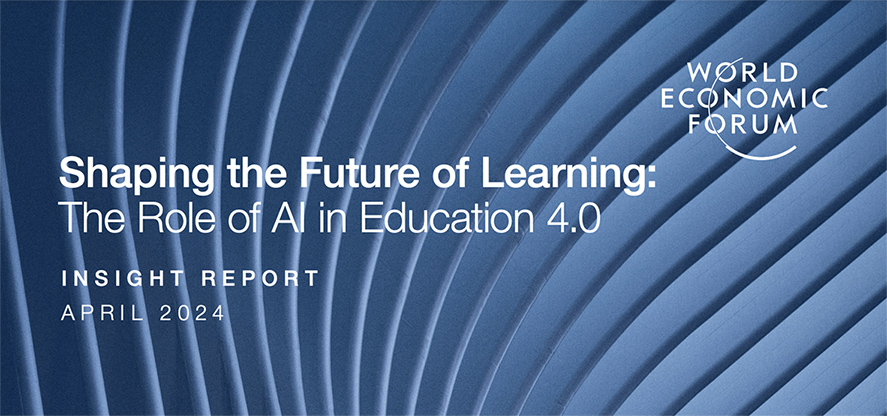
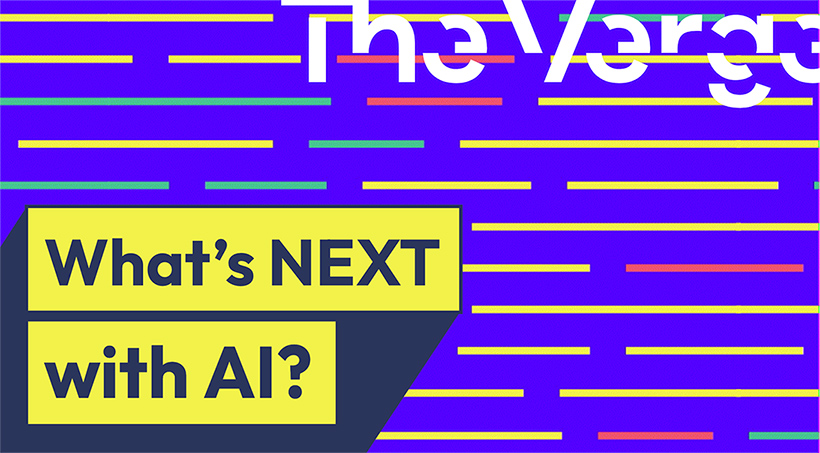

.png?table=block&id=d0858648-32ad-473a-8ffb-b330fb44ffec&spaceId=870cee89-5d14-47cb-a80f-c7e4c65ae16d&width=1890&userId=&cache=v2)
